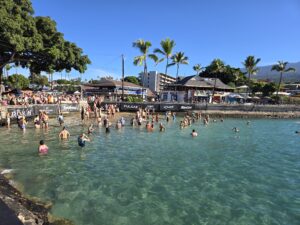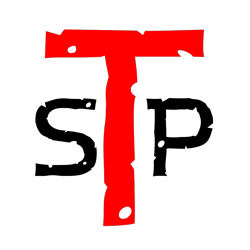
The IRONMAN World Championship in Kona, Hawaii, is the crown jewel of triathlon racing. It’s where the world’s best triathletes come to test their limits in a grueling 140.6-mile race that includes a 2.4-mile ocean swim, a 112-mile bike ride, and a 26.2-mile marathon. But how do you get there? Unlike most races, you can’t just sign up—qualifying for Kona requires serious effort and strategy. There are several ways to secure a spot, each with its own rules and challenges. Let’s dive into the five main methods to qualify for Kona, breaking them down in detail.
- 1. Age Group Qualification
The most straightforward and common way to qualify for Kona is through the age group slots awarded at IRONMAN races. Every full-distance IRONMAN race around the world offers a certain number of slots for Kona, which are distributed across different age groups. These groups are typically divided into 5-year increments (e.g., 18-24, 25-29, 30-34, etc.). The number of slots available per age group depends on the overall number of competitors and the event itself—some races offer more slots than others. To qualify, you must finish at or near the top of your age group.
For instance, in a race where the 35-39 men’s age group has 4 slots, the top 4 finishers will be offered a Kona slot. If any of those athletes decline the slot, it “rolls down” to the next highest finisher. Because of the competition, athletes need to bring their best performance to these events, as finishing in the top 5 or even top 10 may not always be enough.
Tip: Research which races have more slots for your age group and consider competing in races that are known for fewer participants, which can increase your chances of qualifying.
- 2. IRONMAN Legacy Program
If competing for top spots isn’t your style, the IRONMAN Legacy Program offers another path to Kona—one that rewards dedication and loyalty to the sport. The Legacy Program is for athletes who have completed at least 12 full-distance IRONMAN races over a span of at least 12 years. This ensures that participants have a long-term commitment to the sport rather than just a burst of races in a short period. You also need to have never raced in Kona before and must have completed an IRONMAN within the past two years at the time of application to show that you’re still actively competing.
The Legacy Program is designed to recognize those who may not have the speed to qualify through age group slots but have demonstrated passion and perseverance. Since spots are limited, applying as early as possible after meeting the requirements is crucial, as slots are awarded on a first-come, first-served basis.
Tip: If you plan to go this route, map out your race schedule over the long term to ensure you reach the 12-race minimum, and keep track of which races you’ve completed to avoid any issues when applying.
- 3. IRONMAN 70.3 World Championship Qualification (New for 2024)
Starting in 2024, a select number of athletes competing at the IRONMAN 70.3 World Championship will have the opportunity to qualify for Kona. The IRONMAN 70.3 (or Half IRONMAN) covers half the distance of a full IRONMAN race, but the competition is no less intense. The World Championship for this distance draws top athletes from around the globe, and now, those who perform exceptionally well may earn a spot at Kona.
The qualification process for the 70.3 World Championship itself requires strong performances at qualifying events, and then placing near the top of your age group at the championship race. While this new pathway is still highly competitive, it provides a shorter-distance option for those who excel at the 70.3 distance but are looking for an entry point into the full IRONMAN World Championship.
Tip: If you’re particularly strong at the 70.3 distance, this could be a faster route to Kona. Train specifically for the 70.3 distance and target events that feed into the World Championship.
- 4. IRONMAN Foundation Charity Slots
Want to qualify for Kona while also giving back to the community? The IRONMAN Foundation offers charity slots for athletes who are willing to raise money for charitable causes. Each year, a limited number of slots are made available through the Foundation, and athletes who commit to raising a significant amount of money for charity are granted entry to the IRONMAN World Championship.
In some cases, these charity slots are also auctioned off to the highest bidders, with proceeds going to charity. This route allows athletes to skip the intense competition of age group qualification while also making a difference in the world. However, it’s not a cheap option—the fundraising requirement can be quite high, and the auction prices often reach tens of thousands of dollars.
Tip: If you’re passionate about a cause and have a strong network of supporters, this can be a rewarding way to get to Kona. Start planning your fundraising early and be prepared for the financial commitment.
- 5. Wild Card and Special Invitations
On rare occasions, IRONMAN offers wildcard or special invitation slots to athletes. These slots are typically reserved for individuals who have made significant contributions to the sport, overcome incredible personal challenges, or have special stories that resonate with the IRONMAN community. These slots are not something you can directly apply for but are awarded at IRONMAN’s discretion.
Sometimes, wildcard slots are given to professional athletes from other sports, celebrities, or influential figures who help promote the event. While this path isn’t open to everyone, it’s worth mentioning as a way some athletes find their way to Kona.
Tip: While you can’t rely on a wildcard, being involved in the triathlon community and sharing your journey might put you on the radar for such opportunities.
Getting to the IRONMAN World Championship in Kona is a dream that requires dedication, strategy, and sometimes a bit of luck. Whether you’re aiming to qualify by racing to the top of your age group, committing to the sport over many years, or giving back through charity, there are multiple paths to earn your spot. Each route has its own unique challenges, but the reward—crossing the finish line on the Big Island—makes it all worth it. So, which path will you take? Start planning today, and one day you could be racing in Kona!

